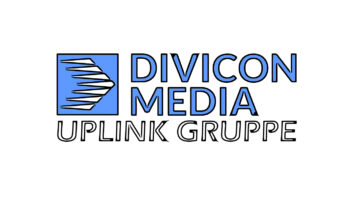Streaming Media West Wrapup 2000
Jan 1, 2001 12:00 PM, By Chriss Scherer, editor
The new transmission medium for radio is the Internet. This is no surprise, as there are thousands of stations and Internet-only broadcasters online already. The Streaming Media West convention, held in San Jose last December, is a newer convention that caters specifically to the streaming media audience. While the NAB and AES conventions provide a substantial amount of Internet-related coverage from exhibitors and in the sessions, there are many other points of interest being addressed. This is not the case at Streaming Media.
The first day began with a keynote address by Steve Ballmer of Microsoft. Ballmer discussed the overall state of streaming today. The general view is that streaming is in its early stages and that subsequent advances will allow for audio (and video) delivery that rivals CD quality.
The conference included five keynote addresses and 200 speakers during the three-day event. One session on Wednesday was of particular interest to radio stations. It was titled Internet Radio: Profitable Business Models for Online Radio. The focus of the session was different business models to make Internet radio profitable, but it also included general ideas on how Internet radio can simply compete.
One point of discussion covered the mobility of terrestrial radio and the idea that for Internet radio to truly succeed, it will need to become wireless. While this is a valid argument, it was also noted that up to half of all radio listenership is in static environments such as homes and offices. The further development of wireless Internet accessibility and applications will aid Internet radio in its growth.
The panelists, representatives from Launch.com, eYada.com, Live365, Onlinemusic.com and TuneTo.com, also commented on the various business models for Internet radio. The commercial sales approach, like the one used for terrestrial radio, is commonly used. Other methods, such as alliances with merchandise providers, use e-commerce for CD, concert ticket and merchandise sales. Still another method is to have the content provider support the transmission mechanism by paying the streaming provider directly. This shifts the profit-generation responsibility back to the content provider.
On the floor
There were 275 companies exhibiting on the show floor with products and services covering every aspect of streaming from content creation and management to audience measurement. Attendance figures were posted at 15,000 attendees. This was the largest streaming show to date and shows that the interest level is very high. While streaming video is a hot topic, it appeared that there was an even distribution of audio and video streaming interests represented at the show.
One news item that sparked interest on the show floor was the formation of Internet Streaming Media Alliance (ISMA). This organization will serve to accelerate the market adoption of open standards for streaming rich media over IP.
Some of the founding companies include Apple, Cisco Systems, Kasenna, Philips, Sun Microsystems, Analog Devices, Informix Media 360, iVAST, Minerva Networks, nCube, Network Appliance, Optibase, Packetvideo, Pix Stream, Sea Change International and SGI. Noticably missing from this list were companies such as RealNetworks, Microsoft, Akamai and iBeam.
While standards already exist for the fundamental pieces required to deploy streaming media over IP, the ISMA will adopt elements of these existing standards and contribute to those still in development in order to publish and promote a systemic, end-to-end specification, which enables cross-platform and multi-vendor interoperability. The first specification from the ISMA will define an implementation agreement for streaming MPEG-4 video and audio over IP networks.
Still room for radio
The show was not just dot-coms and computer hardware manufacturers. There were several exhibitors who are already familiar to radio broadcasters. Radio has an advantage over many of the new streaming media providers in that storage and management of audio data is not new to us. Radio has been creating continuous audio streams for more than 75 years. Radio’s experience with audio processing, ad management and ad insertion are other areas that can draw on the extensive knowledge already in place.
A show that is dedicated to streaming technology may give you the idea that terrestrial radio is on the verge of being supplanted by Internet radio, but that is not the case. As advanced as streaming technology is, there are many areas that have considerable hurdles to clear.
Visit the ISMA site at www.ISM-Alliance.org












